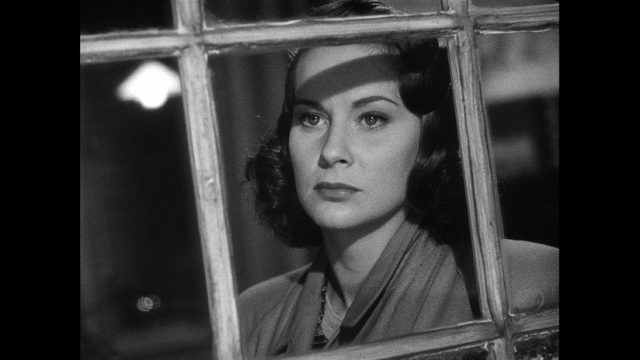It may be strange to think of a time when an Italian noblewoman—she was descended from the Counts d’Arco, who do not have a Wikipedia page or indeed much information in English online at all—would be considered “exotic.” But American standards about that have long shifted, and in fact she was often credited by last name alone to emphasize the idea. Which she hated, not because of any objection to the idea of being treated that way but because she was convinced it made people confuse her with ’20s and ’30s teen idol Rudy Vallée.
She was born in one of those towns that was in at least three different countries during the twentieth century. It was Italian at the time; a few years before her birth, it had been part of the Austro-Hungarian Empire. Today, it’s in Croatia. She was from the sort of family where her “early life” section includes the names of a bunch of relatives, including assorted uncles and things. Her full name was Baroness Alida Maria Laura Altenburger von Marckenstein-Frauenberg. She made her first movie at thirteen and moved to Rome to live with an uncle and get into the film industry a couple of years later.
The ’30s were arguably not a great time for getting into film in Italy, and she was not one of the European stars who made their way to the US. I mean, one of her uncles was a notable fascist who led what cannot have been a pleasant and peaceful Italianization campaign during the occupation of South Tyrol, so propbably she herself was going to be safe in Mussolini’s Italy. However, some of the movies she appeared in during the war were anti-fascist. She even appeared in a pair of movies that were adapted from Ayn Rand’s We the Living that Mussolini allowed because the book was anti-Soviet, but the Italian viewing audience picked up on the fact that it was adapted to be just anti-authoritarian in general.
After the war, she caught the eye of David O. Selznick, leading to her English-language film period. She was in Hitchcock’s The Paradine Case, in Robert Stevenson’s Walk Softly, Stranger, in Irving Pichel’s The Miracle of the Bells—the first Frank Sinatra movie that wasn’t a musical. And, famously, she was in The Third Man, actually billed over Orson Welles. However, she thought Selznick was an appalling authoritarian, and she bought out her contract. She appeared in a wide number of French and Italian films, and she worked on the stage.
So why is she here, for October? Because no few of those French and particularly Italian movies were horror movies. Suspiria, of course. And Les Yeux Sans Visage—Eyes Without a Face, in English—where she plays the mad scientist’s assistant. She appeared in movies about witches, werewolves, and the Devil. She was in a movie where she played an actress in a vampire play uncertain if her costar was a vampire or not. She’s a big name in Italian horror, it turns out, which is an interesting change for a baroness.
I don’t have rich relatives helping me out; consider supporting my Patreon or Ko-fi!

